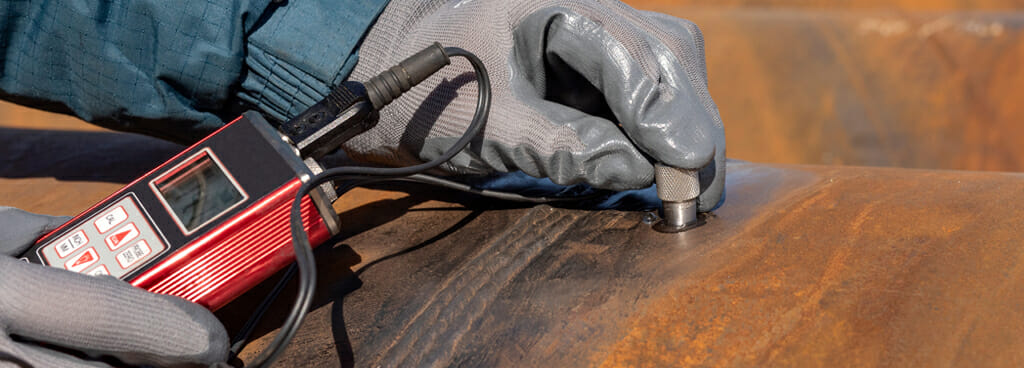How Welding Inspection Madison Makes Sure Quality and Safety And Security in Fabrication
How Welding Inspection Madison Makes Sure Quality and Safety And Security in Fabrication
Blog Article
Just How Reliable Welding Examination Boosts Architectural Integrity and Durability
In the world of building and design, the significance of welding evaluation can not be overstated, as it plays a pivotal function in making certain structural integrity and extending the life expectancy of projects. Join the expedition of exactly how effective welding inspections can transform potential susceptabilities right into strengths, contributing to the enduring success of building and constructions.
Importance of Welding Evaluation
Ensuring the architectural honesty and security of welded buildings requireds strenuous welding examination procedures. Welding examination serves as a critical secure in the construction and manufacturing industries, where the strength and durability of joints substantially affect the general performance of structures.
In enhancement to safety and security, welding evaluation plays an essential function in quality assurance. Market standards and codes, such as those from the American Welding Society (AWS) or the International Company for Standardization (ISO), necessitate adherence to strict standards, emphasizing the significance of assessments in satisfying these specialist and legal commitments.
Secret Examination Techniques

Ultrasonic Evaluating (UT) uses high-frequency acoustic waves to find subsurface flaws, providing specific details regarding weld integrity without creating any kind of damage. Radiographic Examining (RT), including X-rays or gamma rays, supplies an in-depth picture of the weld's interior structure, disclosing covert blemishes. Magnetic Fragment Evaluating (MPT) is an additional non-destructive technique, particularly efficient for identifying surface area and near-surface discontinuities in ferromagnetic products.
Penetrant Testing (PT) includes the application of a liquid dye to reveal surface-breaking problems, using a straightforward and affordable service for non-porous products. Each method has its particular applications, staminas, and limitations, and often a combination of techniques is employed to attain comprehensive inspection results. Proficiency of these methods boosts the dependability and sturdiness of welded structures, straightening with safety and security and performance assumptions.
Identifying Common Defects
Porosity, identified by gas pockets within the weld, reduces the weld's strength and sturdiness. It typically results from impurities or inappropriate securing gas. Fractures, which can occur during or after welding, present significant dangers because of their prospective to circulate under anxiety. They often occur from too much tension, quick cooling, or incorrect weld style.
Insufficient blend, where the weld metal stops working to bond entirely with the base product, threatens the structural stability, leading to weak joints. Slag incorporations occur when non-metallic products are caught in the weld, endangering its stamina and top quality.
Determining these issues with thorough examination techniques, such as aesthetic exam, ultrasonic screening, or radiography, is critical. Attending to these issues makes sure weld top quality, eventually supporting the architectural honesty and security of the built atmosphere.

Enhancing Architectural Efficiency
Comprehending the significance of recognizing common weld defects normally causes discovering techniques for improving architectural performance. The foundational method for boosting efficiency entails utilizing innovative welding techniques and products that mitigate defect event. Making use of premium filler products and making certain correct warm control can considerably lower issues such as porosity and cracking, thus boosting the weld's integrity.
Including state-of-the-art welding technologies, such as laser welding and rubbing mix welding, further magnifies structural resilience. These strategies use remarkable precision and reduced thermal distortion, straight affecting the resilience and stamina of the bonded frameworks. Taking on Source automated welding systems can make certain constant and repeatable weld top quality, decreasing human error.
Additionally, implementing strenuous pre-weld and post-weld treatments is essential. Correct joint style, surface area preparation, and stress-relieving processes add to optimal weld performance. Conducting complete pre-weld evaluations enables very early discovery of potential issues, promoting timely modifications prior to they compromise the structure.
Long-lasting Advantages of Assessment

Via cautious examination techniques, the long-lasting benefits to architectural stability come to be increasingly obvious. Constant and thorough welding examinations play a vital role in protecting against architectural failings by identifying inconsistencies and issues early in the building and construction procedure.
Moreover, regular inspections add to maintaining compliance with sector standards and regulations, consequently staying clear of lawful and financial repercussions. This adherence to top quality assurance not just improves the integrity of the framework however additionally fosters trust fund among stakeholders, including clients, designers, and governing bodies. The thorough paperwork of evaluation results offers as a beneficial source for future repair and maintenance efforts, assisting in notified decision-making.
Additionally, efficient inspection practices support technology by incorporating advanced modern technologies such as non-destructive testing and digital imaging, which can boost accuracy and performance. This technical assimilation additionally highlights the dedication to quality in structural integrity. Ultimately, spending in meticulous welding evaluations is a prudent approach that produces considerable long-term benefits, protecting both the physical and monetary financial investment in facilities jobs.
Conclusion
Efficient welding inspection plays a vital function in boosting architectural honesty and longevity by identifying problems early in the building process. Utilizing methods such as visual evaluation, ultrasonic screening, and radiographic screening guarantees the discovery of problems like splits and porosity that jeopardize weld toughness. Strenuous examinations make certain conformity with industry requirements, therefore prolonging the life-span of structures, decreasing costly repair services, and cultivating stakeholder count on the reliability and safety and security of welded buildings.
In the realm of building and construction and design, the relevance of welding evaluation can not be overstated, as it plays an essential function in guaranteeing structural stability and extending the lifespan of tasks.Guaranteeing the structural stability and safety of welded building and constructions requireds extensive welding assessment procedures.Structure upon the value of welding assessment try this website in safeguarding structural integrity, understanding the essential assessment strategies ends up being important for efficient here are the findings application. Reliable welding evaluation incorporates an array of approaches designed to assess weld top quality, ensuring conformity with stringent design criteria - Welding Inspection Madison.Effective welding examination plays an important function in enhancing structural integrity and durability by determining defects early in the building procedure
Report this page